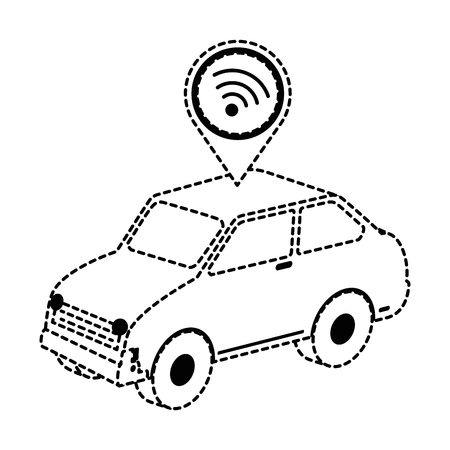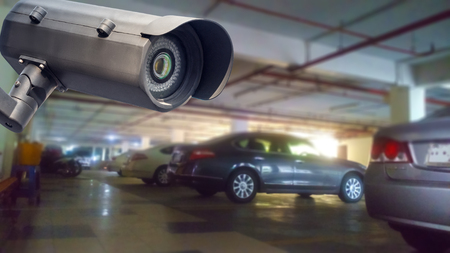1. Introduction to Night Driving Challenges in India
Driving at night in India presents a unique set of challenges for motorists, making road safety a serious concern after sunset. One of the most pressing issues is poorly lit roads, which are common even in many urban and suburban areas. Insufficient street lighting reduces visibility, making it difficult for drivers to spot obstacles or hazards ahead. In addition, Indian roads often experience unpredictable traffic patterns at night, with vehicles suddenly changing lanes or stopping without warning. Erratic behavior from pedestrians, who may cross streets away from designated crossings or appear unexpectedly, further increases the risk of accidents. Moreover, livestock such as cows, buffaloes, or stray animals wandering onto roads is a frequent occurrence, especially on highways and rural stretches. These factors combine to make night driving particularly hazardous for Indian drivers, highlighting the need for advanced safety features like night vision systems and reverse parking cameras to enhance both awareness and reaction time.
2. How Night Vision Technology Enhances Safety on Indian Roads
Night vision technology is becoming an essential safety feature for vehicles in India, given the unique challenges of driving after dark across the country. Night vision systems use advanced infrared cameras and sensors to detect objects, pedestrians, or animals beyond the reach of standard headlights. This information is then displayed on the car’s dashboard screen, enabling drivers to identify potential hazards earlier than they would with naked eyes alone.
How Night Vision Works:
- Infrared Cameras: These detect heat signatures from objects ahead, even in complete darkness or adverse weather conditions.
- Image Processing: The system processes thermal or near-infrared images and highlights obstacles on a display inside the car.
- Alerts & Warnings: Many systems provide audio or visual warnings if a hazard is detected in the vehicle’s path.
Benefits of Night Vision for Indian Roads:
| Challenges on Indian Roads | How Night Vision Helps |
|---|---|
| Poor street lighting in rural and urban areas | Makes it easier to spot people, stray cattle, or parked vehicles that are otherwise invisible at night |
| Frequent fog, heavy rain, and dust storms reducing visibility | Infrared detection works through fog and rain better than normal headlights |
| High number of pedestrians and cyclists using roads after dark | Early detection helps prevent accidents involving vulnerable road users |
| Narrow and unpredictable road layouts | Alerts drivers to sharp turns or obstacles before headlights can illuminate them |
The adoption of night vision technology has proven particularly beneficial in reducing nighttime accidents—a significant issue in India where more than 40% of road fatalities occur after sunset. By giving drivers a clearer view of their surroundings in low-light conditions, these systems play a crucial role in safer night-time travel, making them a smart investment for both city commuters and highway travelers across the country.

3. Importance of Reverse Parking Cameras in Indian Cities
India’s cities are known for their heavy traffic, narrow lanes, and densely packed parking spaces. In such challenging environments, reverse parking cameras have emerged as a crucial safety feature for drivers. These cameras offer a clear view of the area behind the vehicle, making it easier to park even in tight spots commonly found in urban localities like Mumbai, Delhi, Bengaluru, and Chennai. With a reverse parking camera, drivers can avoid hitting unseen obstacles, pedestrians, or two-wheelers that often zip past unnoticed in congested streets.
In addition to urban chaos, even rural India presents its own set of parking challenges. Many villages and small towns have limited lighting and irregularly shaped parking areas, increasing the risk of minor accidents and scratches while reversing. A reverse camera helps prevent such mishaps by providing real-time visuals, ensuring safer manoeuvring regardless of location.
Reverse parking cameras also play a significant role in reducing stress during daily commutes. For many Indian families, the car is parked in crowded residential colonies or roadside spaces with little room for error. The added visibility provided by these cameras not only minimises the risk of damaging your own vehicle but also helps avoid costly disputes with neighbours over minor bumps and dents.
Overall, installing a reverse parking camera is an investment in peace of mind and safety for any car owner navigating India’s busy roads and unpredictable parking scenarios. As more Indian drivers become aware of the benefits, this feature is quickly becoming a must-have in both new cars and as an aftermarket upgrade.
4. Real-life Scenarios: Night Vision and Parking Cameras in Indian Conditions
Indian roads are famous for their unpredictable nature, with a mix of pedestrians, stray animals, uneven street lighting, and densely packed traffic. In such conditions, night vision systems and reverse parking cameras have proven to be invaluable assets for drivers. Let’s look at some real-world examples where these technologies helped avoid accidents or damages:
| Scenario | How Technology Helped |
|---|---|
| Narrow Lanes in Old City Areas (e.g., Chandni Chowk, Delhi) | Reverse parking camera assisted drivers in maneuvering through congested lanes without scraping against walls or parked bikes. |
| Night Driving on Highways with Poor Lighting (e.g., NH44) | Night vision highlighted the presence of cattle crossing the road ahead before they became visible in headlights, allowing timely braking. |
| Crowded Market Parking (e.g., T Nagar, Chennai) | The reverse camera enabled safe reversing despite the chaotic movement of people and auto-rickshaws behind the car. |
| Monsoon Season with Low Visibility (e.g., Mumbai) | Night vision technology penetrated fog and heavy rain better than standard headlights, revealing obstacles like potholes and debris. |
| Residential Colonies with Children Playing (e.g., Bangalore Suburbs) | Parking sensors and rear cameras alerted the driver to children running behind the car, preventing potential accidents. |
These cases reflect how night vision and reverse parking cameras go beyond luxury—they address everyday challenges faced by Indian drivers. Whether it’s spotting a cyclist riding without lights on a rural road at night or safely parking in jam-packed urban lots, these technologies have made a tangible difference in road safety. With typical Indian traffic patterns involving sudden stops, unexpected crossings by people or animals, and limited visibility after sunset, investing in such features is a practical decision for anyone prioritising family safety and vehicle longevity.
5. Cost Vs. Benefit: Is Investing in These Technologies Worthwhile for Indian Car Buyers?
When it comes to purchasing a car in India, every rupee counts for the average buyer. With night vision and reverse parking cameras being positioned as premium safety features, it is important to weigh their costs against the tangible benefits they offer. Night vision systems are generally found in higher-end vehicles and can add a significant amount to the overall price—sometimes upwards of ₹50,000 to ₹1 lakh depending on the technology and brand. Reverse parking cameras, however, are becoming more common even in budget-friendly models or can be fitted aftermarket for as little as ₹2,000–₹10,000.
But is this investment justified? For Indian road conditions—where poorly lit streets, unexpected animals or pedestrians at night, and cramped parking spaces are everyday realities—these features can play a critical role. The safety offered by night vision systems can help prevent accidents that may lead to injuries or costly repairs. Similarly, reverse parking cameras not only make life easier in crowded city areas but also reduce the risk of minor collisions and scratches that are common in tight parking spots.
From an affordability standpoint, while night vision may still be out of reach for many first-time or budget-focused buyers, reverse parking cameras present excellent value for money. Many car owners see them as a must-have upgrade rather than a luxury. Additionally, with increasing awareness about road safety and insurance companies sometimes offering lower premiums for cars equipped with advanced safety features, the long-term savings could offset the initial investment.
Ultimately, for those who drive frequently at night or live in metro cities with challenging parking scenarios, these technologies are more than just convenience—they represent peace of mind and an extra layer of protection. As technology becomes more accessible and local manufacturers start integrating these features into mainstream models, the cost-benefit ratio will only improve for Indian consumers.
6. Conclusion: Smart Car Choices for Safer Driving in India
Choosing the right car is not just about style or mileage—it’s about the safety of your loved ones and yourself on India’s busy roads. As Indian cities grow and traffic becomes more challenging, technologies like night vision systems and reverse parking cameras are no longer luxury add-ons but essential safety features. For Indian families who travel together or daily commuters navigating crowded streets, these tools can make a real difference, especially when driving at night, during the monsoon, or in tight urban spaces. When you plan your next car purchase, look for models that offer reliable night vision and a high-quality reverse parking camera as standard or optional features. Ask dealers for demonstrations and check user reviews from other Indian drivers to understand how these systems perform in local conditions. Investing in cars equipped with such advanced safety features can help protect your family and reduce stress behind the wheel. Let’s make smart car choices that prioritize safety and peace of mind for every journey on Indian roads.

